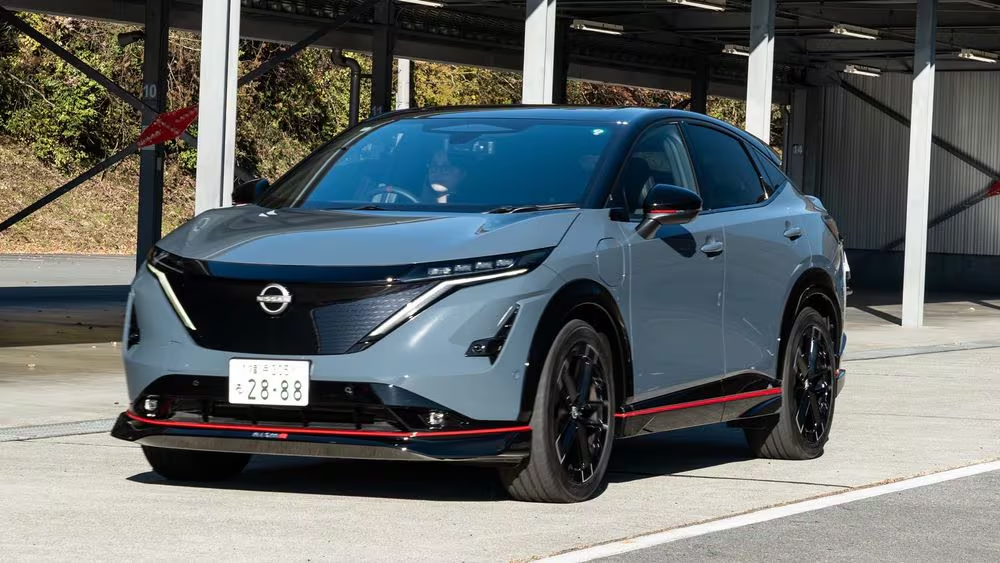What sort of car is the Nissan Ariya 2025? What is the comparison?
The 2025 Nissan Ariya is a crossover SUV that runs entirely on electricity. Compare it against the Hyundai Ioniq 5, Kia EV6, and Volkswagen ID.4.
Is the Nissan Ariya 2025 a decent vehicle?
The Ariya is a great electric car with a stylish appearance, smooth operation, and affordable price. On the TCC scale, it is a TK out of 10.
What is new about the Nissan Ariya in 2025?
In an effort to simplify a selection that was far too complicated the previous year, the quirky Venture+ and Empower+ trim levels have been discontinued. There are not any significant modifications to the Ariya other than the fact that all variants now come with a wireless device charger and that the manufacturer plans to phase in a standard charging connector similar to that of a Tesla Supercharger through the 2025 model year.
Due in significant part to its sleek, slippery design, the Aryia is about the same size as a Rogue but has less interior space. With its large fender flares, sophisticated accents, and clever two-tone paint, it looks fantastic from almost every spot. It is so gorgeous that it is difficult to believe it stands in the same showroom as Nissan’s frequently uninteresting mainstream vehicles. The interior of the Ariya, with its high-tech 12.3-inch screens behind a single glass pane, exquisite detailing, and hidden haptic buttons, gives it a wow factor that might have easily passed for an Infiniti. With upscale materials to match, this is one of the greatest interiors available at any budget.
There are four primary powerplant options available for Ariyas. Models with a single front-mounted electric motor and a 63-kwh battery pack produce 214 horsepower. If you choose the extra rear motor, which provides the Ariya with all-wheel drive, that number is increased significantly to 335 horsepower. Increased power and range are made possible by the 87-kwh battery pack. A front-drive, single-motor vehicle should have 238 horsepower, while a dual-motor, all-wheel-drive variant should have 389 horsepower. Any Ariya is quiet and elegant, but dual-motor variants are significantly faster. Soft, supple suspension setting makes none of the versions particularly athletic. Because Nissan cleverly counteracts body lean and pitch into bends, these models have superior control and sharper handling when fitted with the rear motors.
Sadly, there is not a one-pedal driving mode. The Ariya’s most aggressive drive mode nearly qualifies, but you still need to press the brake pedal to stop completely.

The Ariya does not lead a range. The anticipated range of Engage models with the 66-kwh battery pack is just 205-216 miles, but other models have a range of 267 to 289 miles. The majority of these EVs have a fuel economy of little about 3.0 miles per kilometer. According to Nissan, if you connect the battery to a DC fast-charger, it should charge from 20 to 80% in around 40 minutes.
The Ariya’s interior is spacious and pleasant, with excellent room for both the front bucket and rear bench seats. While the passenger receives comparable power in most trims, the driver’s seat benefits greatly from standard power adjustments with memory. Although it will not surpass the similarly sized Nissan Rogue, the cargo area’s almost 23 cubic feet of room is unquestionably superior to that of a standard sedan. With the seat backs flopped down, that space more than doubles.
Ariyas has received great safety ratings, including a five-star overall rating from the NHTSA and a Top Safety Pick award from the IIHS. Good driver-assistance technology is standard on all models, and the highest trim level has a system that enables hands-off driving on highways.
What is the price of the Nissan Ariya for 2025?
With an obligatory $1,390 destination fee, the base Ariya costs $41,160. Upgrading to the 91-kwh battery and all-wheel drive increases the price to $46,790, while the all-wheel-drive variant costs an additional $4,000.
Where is the Nissan Ariya 2025 manufactured?
in Japan. It is therefore ineligible for the federal EV tax incentives that are currently in effect.












